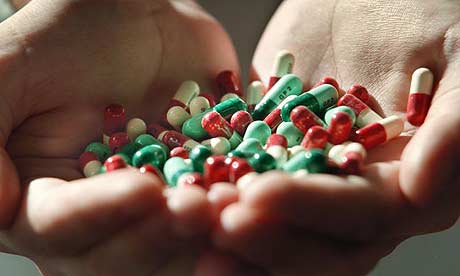Introduction
Counterfeit medicines are found everywhere in the world ranging from
random mixtures of harmful toxic substances to inactive and ineffective
preparations. Some contain a declared, active ingredient and look so
similar to the genuine product that they deceive health professionals as
well as patients. But in every case, the source of a counterfeit
medicine is unknown and its content unreliable. Counterfeit medicines
are illegal in Malaysia. They can result in treatment failure or even
death. Eliminating them is a considerable public health challenge.
Definition
The World Health Organization (WHO) defines counterfeits medicines as:
"medicines that are deliberately and fraudulently mislabelled with respect to identity and/or source. Both branded and generic products are subject to counterfeiting. Counterfeit medicines may include products with the correct ingredients or with the wrong ingredients, without active ingredients, with insufficient or too much active ingredient, or with fake packaging".
As for Malaysia, there is no specific definitions on counterfeits
medicines, however the legislation for counterfeit products are well
covered under The Trade Act. According to The Sales and Drug Act 1952:
Regulation 7(1)(a), 7(1A)(a-g) of the Control of Drugs and Cosmetic
Regulation (CDCR) states that all medicinal products must be registered
with National Pharmaceutical Control Bureau (NPCB) Ministry of Health
before being marketed. All registered medicinal products will be given a
unique registration numbers.
Products with the following criteria are considered unregistered
medicinal products which include the counterfeit medicinal products:-
(i) if they bear
- No registration number
- False registration number
- Registration number belonging to other products
- Registration number which has been cancelled
- No safety label hologram Meditag TM
- False hologram Meditag TM
- Ingredient which differ from the original formula during registration
- A mixture of 2 registered products
- Information on the packaging which differ from the approved version
(ii) if they contain Adulterants










0 comments:
Post a Comment